Content |
|---|
Description “Rainbow Lorikeet”:
Of 25-30 cm. length; 70-169 grams and a wingspan of 46 cm..
The plumage of the Rainbow Lorikeet (Trichoglossus moluccanus) is very bright. The head is deep blue with a neck greenish-yellow and the rest of the upperparts (wings, back and tail) are deep green. The chest is red with blue-black barring.. The belly is deep green, and the thighs and rump are yellow with deep green barring.. In flight, a yellow wing-bar contrasts clearly with the red underwing-coverts.
There is little to visually distinguish between the sexes; However, for an acute observer, their dimorphism is readily apparent.
The youth has bill black, which gradually brightens to orange in the adults..
The markings of Trichoglossus moluccanus resemble of the Coconut Lorikeet (Trichoglossus haematodus), but with a belly blue and breast with little or no blue-black barring..
Rainbow Lorikeet taxonomy
With one exception, the species have been treated so far as a group of subspecies within the extended group Coconut Lorikeet (Trichoglossus haematodus), but they differ from the Trichoglossus haematodus her pale red breast without bars ; its blue belly against green or blackish; its pale blue hood without black edge and its larger size.
The subspecies Trichoglossus moluccanus eyrei (South of Australia) It is included within the species nominal. Small hybrid population of present species paired with the Musk Lorikeet (Glossopsitta concinna) in SE Southern Australia (Yorke Peninsula).
- Sound of the Rainbow Lorikeet. (1)
(1) Some species are under extreme pressure because of traps and harassment. So, the open availability of high-quality recordings of these species may further worsen the problems, this being the reason why downloading these recordings is off. In conclusion, recorders themselves are free to share these files on xeno-canto, but they will have to approve access to these recordings.
We do not take this action lightly, and we wish it wasn't necessary, but we are convinced that the negative impacts of offering easy access to these recordings outweigh the benefits. To access these recordings, You can contact directly with the recorder.
Subspecies description:
-
Trichoglossus moluccanus moluccanus
(Gmelin, 1788) – Nominal.
-
Trichoglossus moluccanus septentrionalis
(Robinson, 1900) – As the species nominal but with brighter purple/blue stripes on the head and tail shorter.
Habitat:
The Rainbow Lorikeet often they travel together in pairs and occasionally respond to calls to fly like a flock, then they disperse again in pairs. Couples aggressively defend their feeding and nesting against other lstallion arcoiris and other bird species. Not only they scare off smaller birds, as the Noisy Miner (Manorina melanocephala) and the Brush Wattlebird (Anthochaera chrysoptera), but also to larger, as the Australian Magpie (Gymnorhina tibicen).
Reproduction:
In Australia, Reproduction usually takes place during spring (from September to December), but it may vary from one region to another with changes in food availability and climate. Sites nesting They are variable and may include gaps as tall trees eucalyptus, trunks of palm trees or overhanging rocks.
Couples sometimes nest in the same tree with other couples Rainbow Lorikeet or other species of birds. The clutch size is between one and three eggs, which are incubated for about 25 days. Incubation tasks are performed by the female alone.
The Rainbow Lorikeet are mostly monogamous and remain paired for long periods, if not for life.
Food:
Nectar and pollen of native trees and shrubs, especially eucalyptus (for example, Eucalyptus gummifera, Eucalyptus maculata).
Rainbow Lorikeet distribution:
Extension of the distribution (breeding/resident): 3,810,000 km2
Endemic East and Southeast Australia (of Cape York to the Eyre Peninsula, South of Australia)
They were recorded for the first time in Perth in 1968 and the population is believed to have come from fewer than ten birds that were deliberately released or had escaped from aviaries.
Since the beginning of the decade 1960, the population has grown exponentially and has spread rapidly throughout 174 km2 metropolitan area. The current population is estimated at 8.400 birds and their range is expanding at a rate of 0,7 km per year.
wanderer Tasmania.
Subspecies distribution:
-
Trichoglossus moluccanus moluccanus
(Gmelin, 1788) – Nominal.
-
Trichoglossus moluccanus septentrionalis
(Robinson, 1900) – North of Queensland (Cape York Peninsula), in northwestern Australia; also the Torres Strait Islands (Boigu and Saibai except, at the north end) and it was introduced in the district of Perth, in southwest Australia..
Conservation “Rainbow Lorikeet”:
1. Current red list category of the UICN: Least concern.
2. The population trend: Decreasing.
3. Population size : Unknown.
Rationale for the Red List category
This species has a extremely large distribution area, and therefore does not approach the thresholds for Vulnerable under the criteria of size range (Extent of Occurrence <20,000 km2 combined with a decreasing area size or fluctuating distribution, extension / habitat quality, or population size and a small number of places or severe fragmentation). While the trend of the population seems to be decreasing, the decline is not believed to be rapid enough to approach the Vulnerable thresholds according to the population trend criterion (decrease of more than 30% in ten years or three generations).
The population size has not been quantified, but it is not believed to approach the thresholds for Vulnerable under the criterion of population size (<10.000 mature individuals with an estimated> 10% continuous decline in ten years or three generations, or with a specific population structure). For these reasons, the species is assessed as Least concern.
Justification of the population
Global population size has not been quantified, but the species is described as abundant in northern Australia and rare Tasmania (pit et to the. 1997).
Justification trend
They suspected that the population is declining due to unsustainable levels of exploitation.
Rainbow Lori Threats
The species has been the subject of a intense trade: from 1981, When it was included in the Appendix II of the CITES, they have been 100.388 individuals caught in international trade (UNEP-WCMC CITES Trade Database, January 2005).
In captivity:
Not very common. Its longevity It 20 years en libertad, 15-25 years in captivity and its market price is around wild birds 250 EUR.
Alternative names:
– Rainbow Lorikeet, Rainbow Lorikeet (Rainbow) (English).
– Loriquet à tête bleue (de Swainson), Loriquet à tête bleue (moluccanus), Loriquet arc-en-ciel, Loriquet de Swainson (French).
– Regenbogenlori (German).
– Lóris-molucano, Periquito-arco-íris (moluccanus) (Portuguese).
– Lori arcoiris, Lori de Arco Iris (español).

scientific classification:
– Order: Psittaciformes
– Family: Psittaculidae
– Gender: Trichoglossus
– Scientific name: Trichoglossus moluccanus
– Subpoena: (Gmelin, JF, 1788)
– Protonimo: Psittacus moluccanus
Images “Rainbow Lorikeet”:
Videos "Rainbow Lorikeet"
“Rainbow Lorikeet” (Trichoglossus moluccanus)
-
Sources:
1. Avibase
2. Parrots of the World – Forshaw Joseph M
3. Parrots A Guide to the Parrots of the World – Tony Juniper & Mike Parr
4. Birdlife
5. Wikipedia contributors, “Rainbow lorikeet,” Wikipedia, The Free Encyclopedia, https://en.wikipedia.org/w/index.php?title=Rainbow_lorikeet&oldid=876097068 (accessed January 10, 2019).
Photos:
(1) – A Rainbow Lorikeet Trichoglossus moluccanus in Melbourne, Australia by Alfred Sin [CC BY-SA 2.0], via Wikimedia Commons
(2) – Rainbow Lorikeet Trichoglossus moluccanus on a garden bird feeder, Sydney, Australia by Tim Douglas from Sydney, Australia [CC BY-SA 2.0], via Wikimedia Commons
(3) – Rainbow Lorikeets (Trichoglossus moluccanus) feeding frenzy South Molle Island, Airlie Beach, Central Queensland, AUSTRALIA by Bernard DUPONT – Flickr
(4) – Rainbow Lorikeet (Trichoglossus moluccanus) Kangaroo Flat, Vic by patrickkavanagh – Flickr
(5) – Rainbow Lorikeet Trichoglossus moluccanus, Daintree Village, Queensland, Australia by JJ Harrison (jjharrison89@facebook.com) [GFDL or CC BY 3.0], from Wikimedia Commons
(6) – Rainbow Lorikeets Trichoglossus moluccanus in Broulee, New South Wales, Australia by Steve Shattuck from Canberra, Australia [CC BY 2.0], via Wikimedia Commons
(7) – Trichoglossus moluccanus by Skitterphoto [CC0], via Wikimedia Commons
(8) – Rainbow lorikeet, Trichoglossus moluccanus, Royal Botanic Gardens, Melbourne, Australia by Derek Keats from Johannesburg, South Africa [CC BY 2.0], via Wikimedia Commons
(9) – Rainbow Lorikeets Trichoglossus moluccanus at a bird feeder in Narooma, New South Wales, Australia by Robyn Jay [CC BY-SA 2.0], via Wikimedia Commons
(10) – A digital image of Trichoglossus moluccanus, by the esteemed scientific illustrator Ferdinand Bauer [Public domain], via Wikimedia Commons
– Sounds: Marc Anderson, XC434383. accessible www.xeno-canto.org/434383
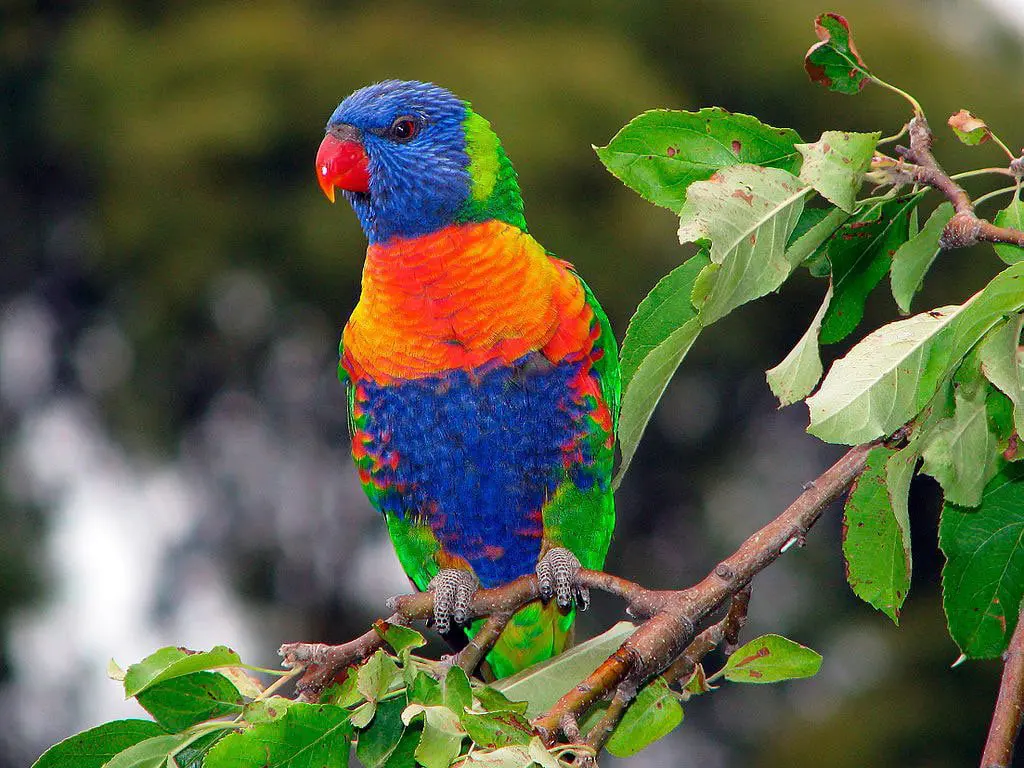
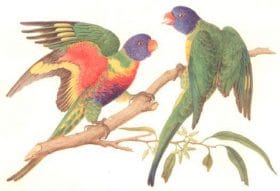

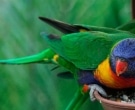
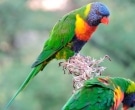
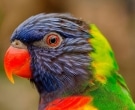
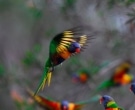
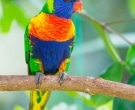
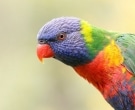
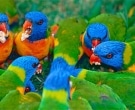
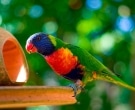
Visitor Rating: 5 Stars